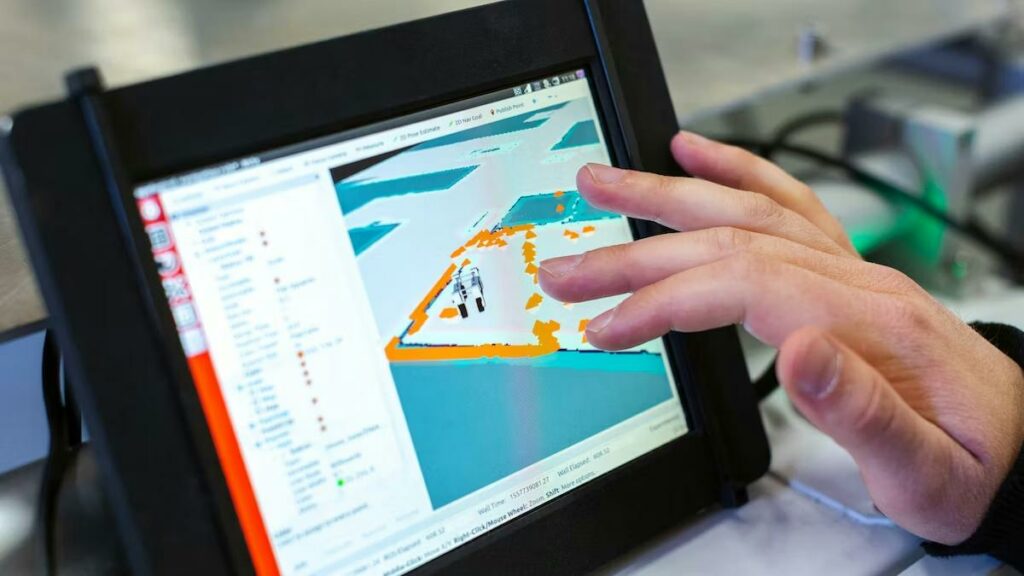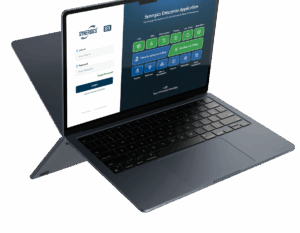An Enterprise Resource Planning (ERP) system is the backbone of many businesses, streamlining operations across departments and ensuring everything runs smoothly. However, as your business grows and evolves, your existing ERP system might struggle to keep pace. This is when an ERP upgrade becomes necessary.
While an ERP upgrade can bring significant benefits like improved efficiency, enhanced data security, and access to new functionalities, navigating the process can be complex. To ensure a successful transition, careful planning and consideration are crucial.
Synergistic Solutions, your trusted partner in business technology solutions, brings you 10 key factors to consider for a smooth and successful ERP upgrade:
1. Define Your Goals and Objectives:
Start by clearly defining the “why” behind your upgrade. Do you need to improve reporting capabilities to gain deeper insights into your business performance? Are you looking to integrate new functionalities like e-commerce or advanced inventory management to cater to changing customer demands or expand your operations?
Identifying your specific goals will guide the entire upgrade process. Here are some additional questions to consider:
- Are there recurring tasks or manual processes that can be automated with the new system?
- Do you need to improve collaboration and communication between departments?
- Are there compliance requirements your current system doesn’t meet?
2. Assess Your Current System:
Conduct a thorough analysis of your existing ERP system. This goes beyond simply understanding its functionalities. Here’s a deeper look:
- Strengths: What aspects of your current system work well? Can any of these functionalities be integrated into the new system?
- Weaknesses: Identify areas where your current system falls short. What limitations are hindering your business growth?
- Data Structure: How is your data currently organized? Understanding your data structure is crucial for a smooth and accurate data migration process during the upgrade.
- Customization: Has your current system been heavily customized? Extensive customizations can complicate the upgrade process. Evaluate if these customizations are still essential or if the new system offers alternative solutions.
3. Choose the Right Upgrade Partner:
Selecting the right partner for your ERP upgrade is critical. Look for a company with the following:
- Experience: Do they have a proven track record of successful jewellery erp software upgrades, particularly with the specific system you’re considering?
- Expertise: Does their team possess the necessary technical expertise and certifications to implement and customize the chosen ERP system?
- Project Management: Do they have a proven methodology for managing complex upgrade projects efficiently and on schedule?

4. Consider User Adoption and Change Management:
- Resistance to Change: People are often apprehensive about using new systems. A well-defined change management plan helps address these concerns and encourages user buy-in.
- Training and Support: Develop a comprehensive training plan to equip your employees with the necessary skills and knowledge to utilize the upgraded system effectively. This should include interactive sessions, hands-on exercises, and ongoing support resources.
- Communication is Key: Keep all stakeholders informed throughout the upgrade process. Regular communication with employees, management, and other departments helps manage expectations, address concerns, and ensure a smooth transition.
5. Data Migration Strategy:
Data migration is a critical step in the jewellery manufacturers upgrade process. Develop a robust strategy to ensure the seamless and secure transfer of your existing data to the new system. This includes data cleansing, mapping, and testing to avoid errors and disruptions.
Data Cleansing: Cleanse your existing data to eliminate errors, inconsistencies, and duplicates. Accurate data is essential for optimal system performance and informed decision-making.
Data Mapping: Map your existing data fields to the corresponding fields in the new system. This ensures a smooth and accurate data transfer.
Testing and Validation: Thoroughly test the migrated data to ensure its accuracy and completeness. This helps avoid errors and disruptions during go-live.
6. Testing and User Acceptance Testing (UAT):
Thorough testing is essential before going live with the upgraded system. This includes system testing, integration testing, and User Acceptance Testing (UAT) to ensure the new system functions as expected and meets user needs.
System Testing: The IT team thoroughly tests all functionalities of the new system to ensure it operates as expected.
Integration Testing: Test how the new ERP system integrates with other existing systems used in your business.
User Acceptance Testing (UAT): Actual users from different departments test the system to ensure it meets their needs and is user-friendly.
7. Communication is Key:
Keep all stakeholders informed throughout the upgrade process. Regular communication with employees, management, and other departments helps manage expectations, address concerns, and ensure a smooth transition.
Managing Expectations: Regular updates from leadership keep employees informed about the timeline, goals, and potential impacts of the upgrade. This helps manage expectations and fosters a sense of ownership among stakeholders.
Addressing Concerns: Open communication channels allow employees to voice their concerns and ask questions. Proactively addressing these concerns can alleviate anxiety and ensure a smoother transition.
Collaboration: Effective communication between departments is crucial for a successful upgrade. Collaboration ensures a unified approach and minimizes disruptions during the implementation process.

8. Budgeting and Resource Allocation:
ERP upgrades can involve significant costs. Accurately assess the project’s budget and allocate resources effectively. This includes software licensing fees, implementation costs, training expenses, and potential downtime considerations.
Accurately Assess Costs: Factor in all potential expenses, including software licensing fees, implementation costs, training expenses, and potential downtime considerations. Hidden costs can derail your project, so a comprehensive budget is essential.
Resource Allocation: Identify the human resources needed for the upgrade project. This might include internal IT staff, project managers, and employees from various departments for training and testing purposes. Allocate resources effectively to ensure the project stays on track and within budget.
9. Post-Go-Live Support:
The journey doesn’t end after going live with the upgraded ERP system. Having a post-implementation support plan in place is crucial to address any issues that might arise and ensure optimal system utilization.
Help Desk: Provide a reliable help desk for employees to report issues and access technical assistance.
Ongoing Training: Offer ongoing training sessions to ensure users continue to develop their skills and knowledge of the new system’s functionalities.
System Monitoring: Proactively monitor system performance to identify and address any potential issues before they disrupt operations.
10. Continuous Improvement:
An ERP system is an ongoing investment. Following the upgrade, establish a process for continuous improvement. Gather user feedback, monitor system performance, and stay updated on the latest features and functionalities to optimize your ERP system for long-term success.
Gather User Feedback: Regularly solicit feedback from users to identify areas for improvement and opportunities to optimize the system’s functionalities.
Monitor System Performance: Continuously monitor key performance indicators (KPIs) to ensure the system is delivering the expected benefits.
Stay Updated: The technology landscape is constantly evolving. Keep your ERP system up-to-date with the latest features and functionalities to maintain a competitive edge.
Synergistic Solutions: Your Partner in Successful ERP Upgrades
Upgrading your ERP system can be a daunting task. However, with careful planning, the right partner, and a focus on these key considerations, you can ensure a smooth and successful transition.
Synergistic Solutions is here to help you navigate the entire ERP upgrade process. Our team of experts will work closely with you to understand your specific needs, recommend the best solutions, and ensure a seamless implementation.
Contact Synergistic Solutions today and let us guide you towards a successful ERP upgrade that empowers your business for future growth!












